Why you can trust Tom's Hardware
The GM27-FQS showed some unique (in a good way) behavior thanks to its myriad of color and image options. Out of the box, it needs just one tweak: to change the Color Space option from Auto to DCI-P3. I’ll explain below.
Grayscale and Gamma Tracking
Our grayscale and gamma tests use Calman calibration software from Portrait Displays. We describe our grayscale and gamma tests in detail here.
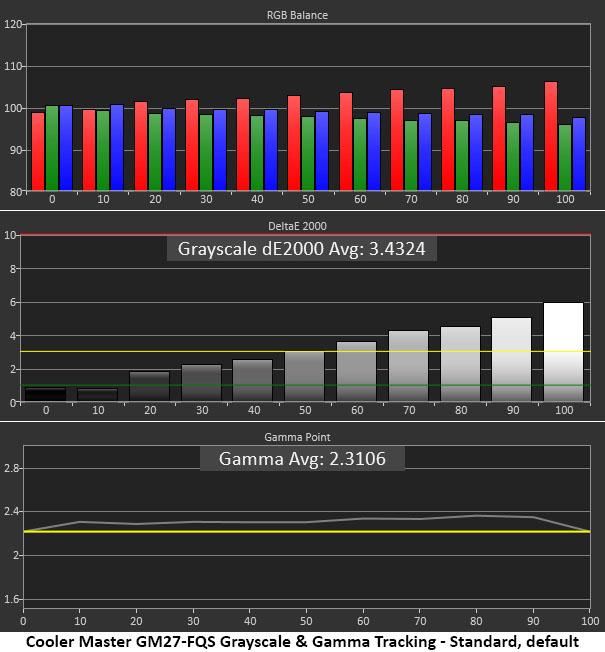
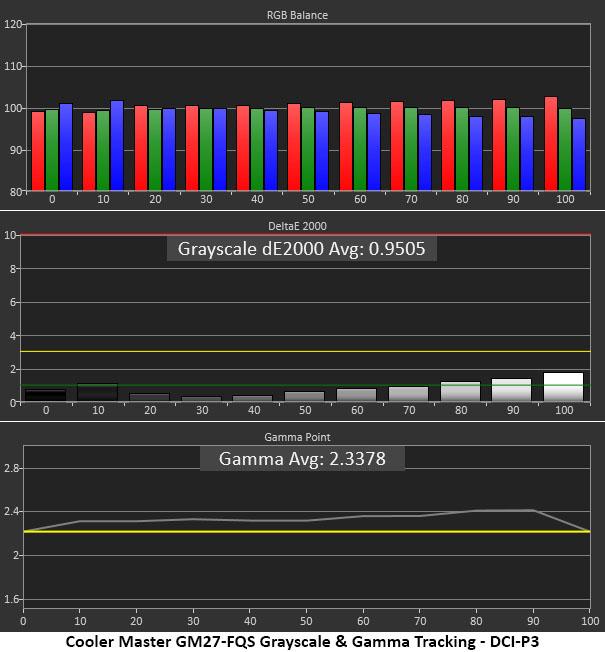
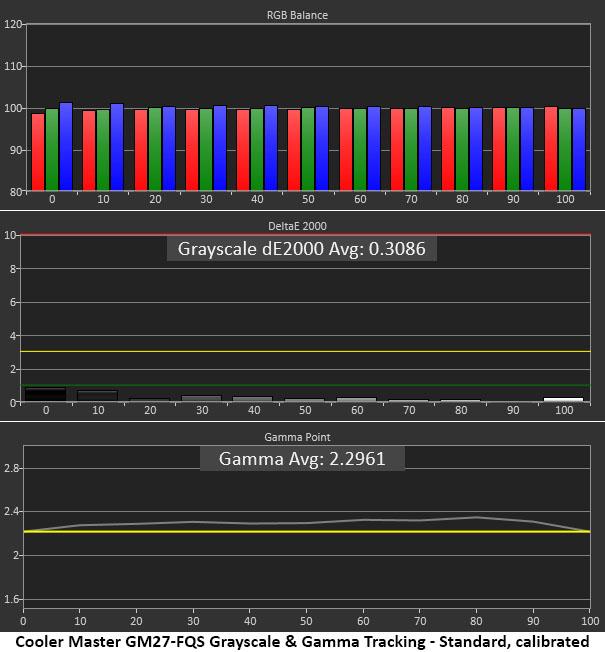
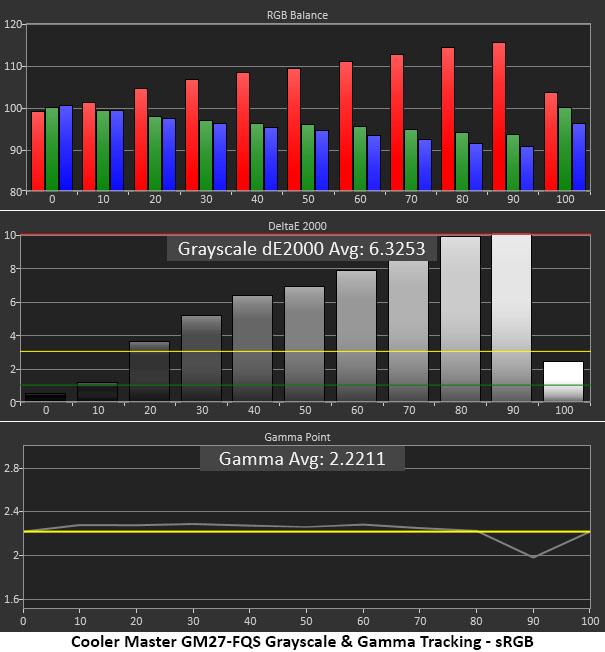
With no adjustments, the GM27-FQS is a tad warm in tone. Slight red errors can be seen in steps higher than 60%. You can enjoy the monitor this way, but if you simply change the Color Space option from Auto to DCI-P3, the grayscale tracking becomes free of visible errors. All values are under 2dE, which is professional-level performance. If you calibrate the User color temp, the error is even lower, but only the meter can tell the difference.
There is an sRGB option in the Color Space menu, but it has more visible grayscale errors that manifest as a red push. Unusually, 100% brightness is fine but steps 20-90% are quite warm. In all cases, gamma runs a tad dark, but this error doesn’t negatively affect real-world content.
Comparisons

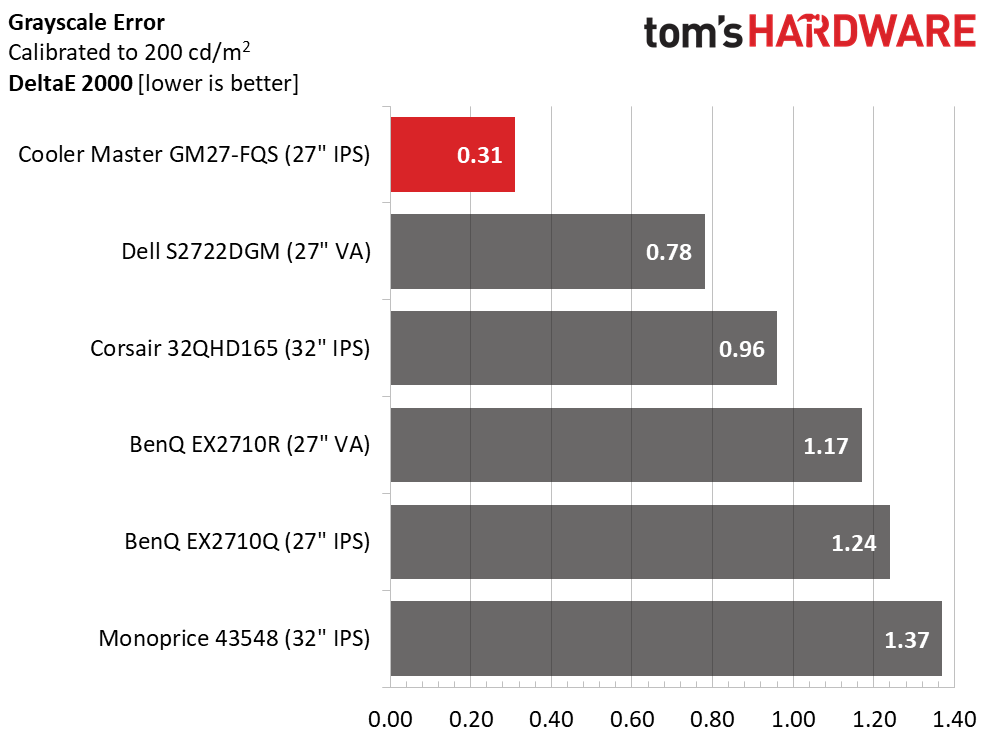
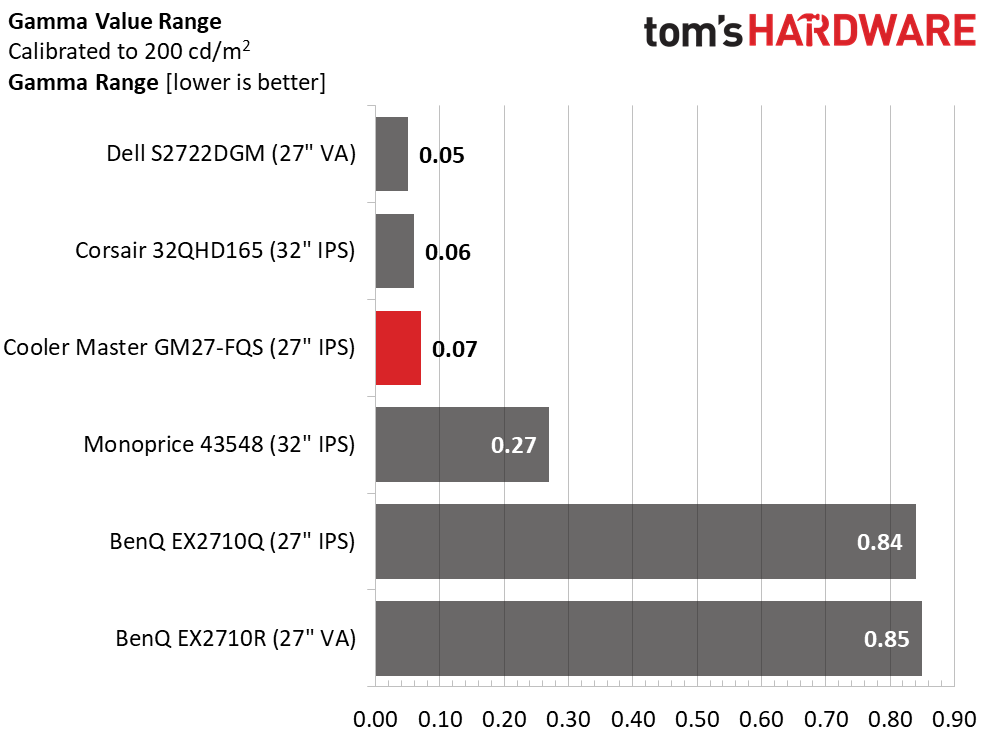

The GM27-FQS’ initial grayscale measurements aren’t impressive, but the fix is so simple that I must applaud the monitor’s accuracy. With one change in the Color Space menu, tracking goes from average to excellent. If you calibrate the RGB sliders as I did, the error is even lower, but that difference can’t be seen with the naked eye. If I only changed the Color Space option, the monitor would be in third place here.
Gamma tracking in all cases is exemplary. With a 0.07 range of values and a 4.54% deviation from 2.2 (actual value 2.30), detail is crisp and clear at all brightness levels and in all content. There is nothing to complain about.
Color Gamut Accuracy
Our color gamut and volume testing use Portrait Displays’ Calman software. For details on our color gamut testing and volume calculations, click here.
Get Tom's Hardware's best news and in-depth reviews, straight to your inbox.

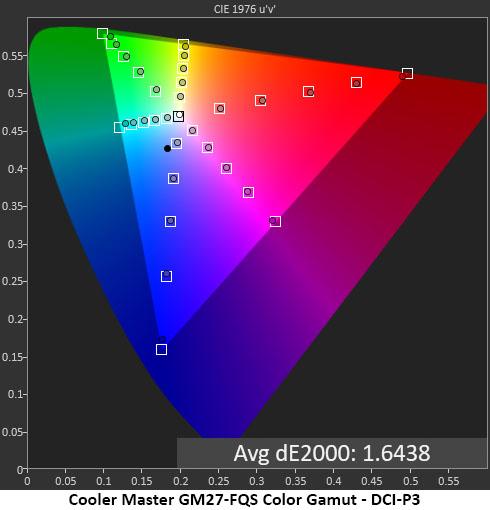
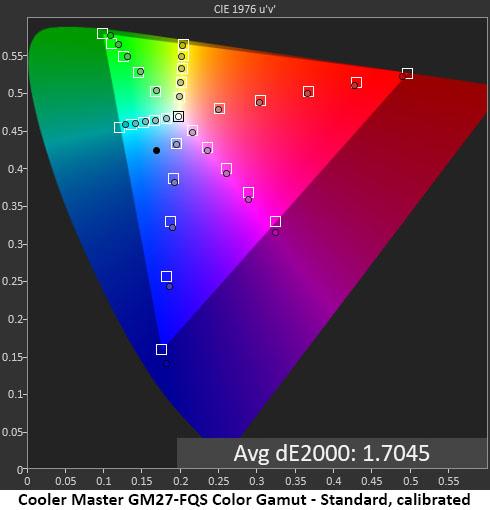

Though the GM27-FQS’ grayscale tracking isn’t amazing at the factory default settings, color tracking is spot-on. In the initial chart, you can see that all points are in contact with their target boxes which indicate 1dE. An average of 2.34dE is one of the best default numbers I’ve recorded for any monitor.
Changing only the Color Space option takes the error down to 1.64dE. You can see now that all points are inside their target boxes. In the third chart, my calibration has almost no effect. In fact, magenta’s hue is a little off by comparison. Given all the results I’ve recorded, I’d say the DCI-P3 gamut mode is the best choice. There’s no need to calibrate further.
The sRGB mode has more significant errors. Red is about 10% over-saturated. And magenta is visibly off-hue. Other colors’ hue errors are less obvious, but this mode is generally less accurate than DCI-P3.
Comparisons
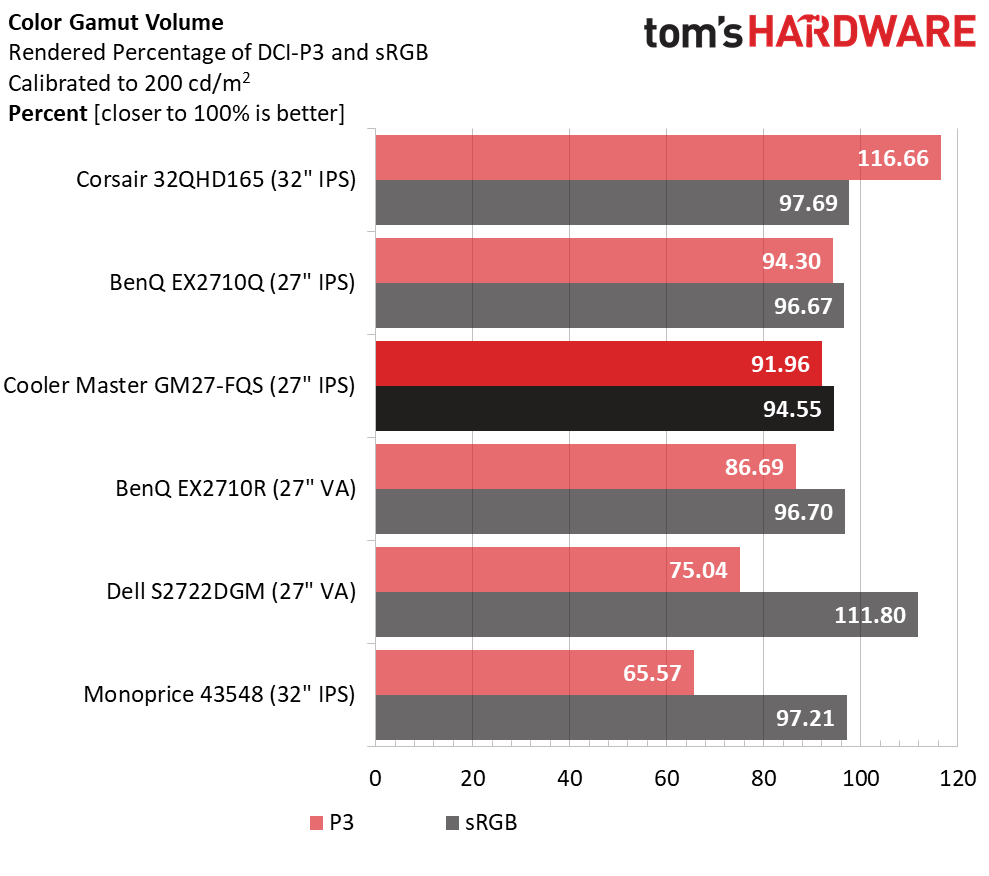

The GM27-FQS bests its competitors in the color gamut accuracy test. A 1.7dE result is about as good as it gets, especially for a monitor in this price range.
Cooler Master claims 90% coverage of DCI-P3 and the GM27-FQS delivers just under 92%. This is a little above average though some recently reviewed screens have gone beyond 100% coverage like the Corsair shown here. sRGB volume is down slightly thanks to an under-saturated blue primary. However, this isn’t significant in terms of usability. I would not recommend this monitor for color-critical work in the sRGB realm, but it is more than qualified for tasks requiring DCI-P3.
Current page: Grayscale, Gamma and Color
Prev Page Brightness and Contrast Next Page HDR Performance
Christian Eberle is a Contributing Editor for Tom's Hardware US. He's a veteran reviewer of A/V equipment, specializing in monitors. Christian began his obsession with tech when he built his first PC in 1991, a 286 running DOS 3.0 at a blazing 12MHz. In 2006, he undertook training from the Imaging Science Foundation in video calibration and testing and thus started a passion for precise imaging that persists to this day. He is also a professional musician with a degree from the New England Conservatory as a classical bassoonist which he used to good effect as a performer with the West Point Army Band from 1987 to 2013. He enjoys watching movies and listening to high-end audio in his custom-built home theater and can be seen riding trails near his home on a race-ready ICE VTX recumbent trike. Christian enjoys the endless summer in Florida where he lives with his wife and Chihuahua and plays with orchestras around the state.